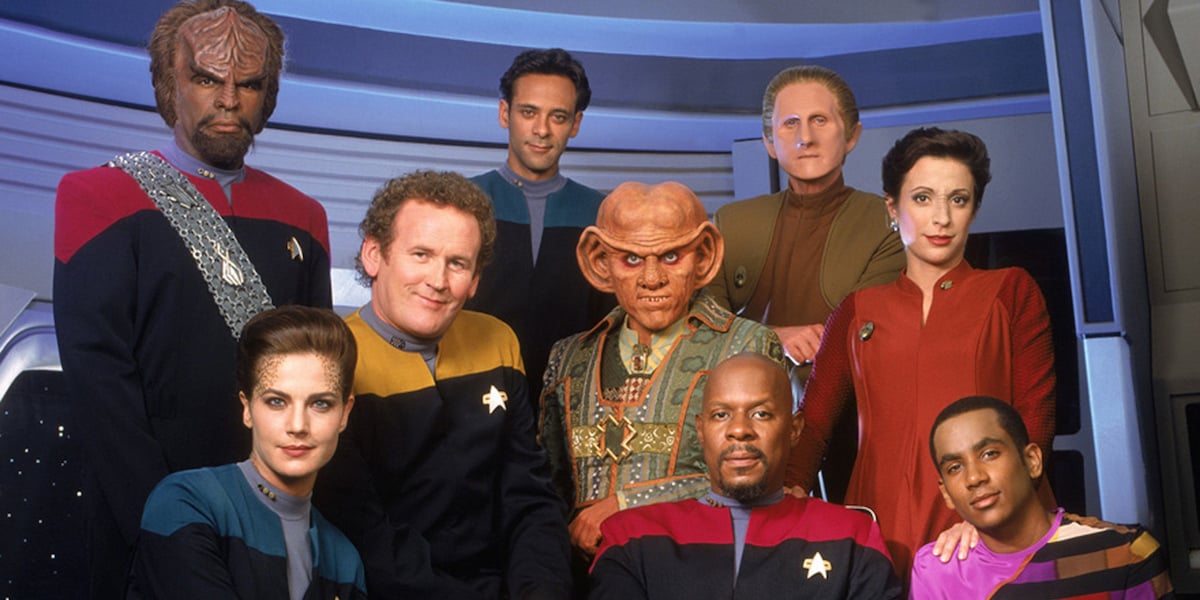When it first hit airwaves in 1993, fans railed against the new third installment of the Star Trek franchise: Deep Space Nine. Where The Next Generation was colorful, clean and idealistic, DS9 was darker, murkier, and didn’t even take place on a space ship, for the Prophets’ sake! As the series chugged along, though, the brilliance of Deep Space Nine‘s deviation from expectation began to resonate with even the staunchest of fans. By the time DS9‘s seventh and final season was on the air, the series has blossomed into one of Trek‘s best and most beloved – and 30 years later, Deep Space Nine‘s affection among fans has only grown.
Though anytime is a great time to watch DS9 if you ask me, there truly isn’t a better time to start the series – not only has a feature-length documentary about the show been released, but if rumors are to be believed, the upcoming third season of Picard will also feature some legacy characters and significant ties to Deep Space Nine. So whether you’re looking for a refresher ahead of Picard or just want to enjoy a brilliant series, here are 10 of the best Deep Space Nine episodes to watch in celebration of its 30th anniversary. The series is jam packed full of classics, like the all-timer “It’s Only a Paper Moon” and the poignant “Wrongs Darker Than Death or Night” which means we couldn’t include them all, so if you don’t see your favorite, share it in the comments!
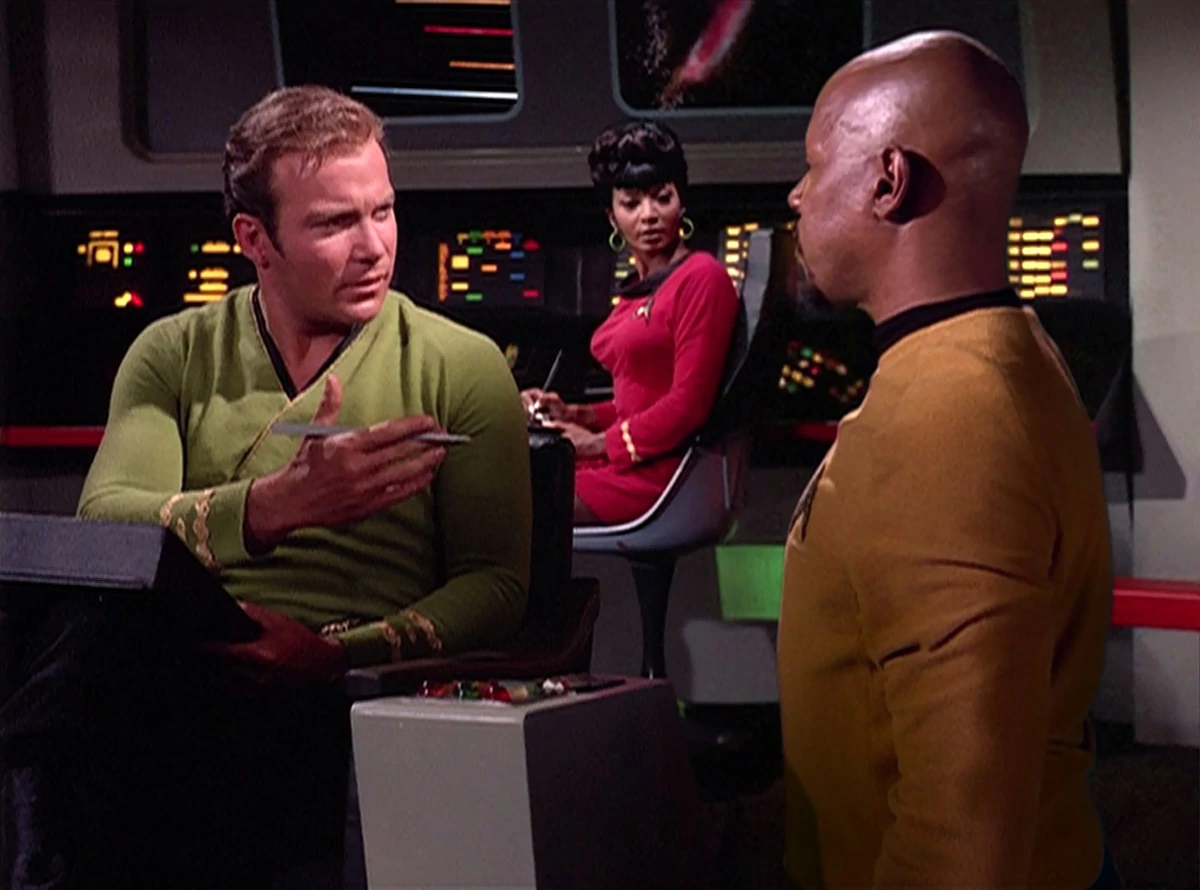
5×06 “Trials and Tribble-ations”
Equal parts technological feat and nostalgic throwback, season five takes a break from the Dominion War to have some fun with “Trials and Tribble-ations”, a standalone episode which sees Sisko, Dax, O’Brien, and Bashir travel back in time to stop an errant Klingon from wreaking havoc on Kirk’s Enterprise. Luckily for us, the DS9 crew find themselves on the Enterprise mid-tribble infestation, so we get to delight in watching Sisko and co. avoid temporal anomalies while skirting the ever-growing Tribble population.
Set against the backdrop of one of The Original Series‘ most beloved episodes, “Trials and Tribble-ations” is a technical marvel: going to painstaking efforts behind-the-scenes to help the DS9 crew blend seamlessly with footage shot nearly 30 years earlier. Beyond the impressive visual effects, “Trials and Tribble-ations” is the perfect Trek episode to enjoy on an anniversary: modern Trek paying homage to the show that paved the way.
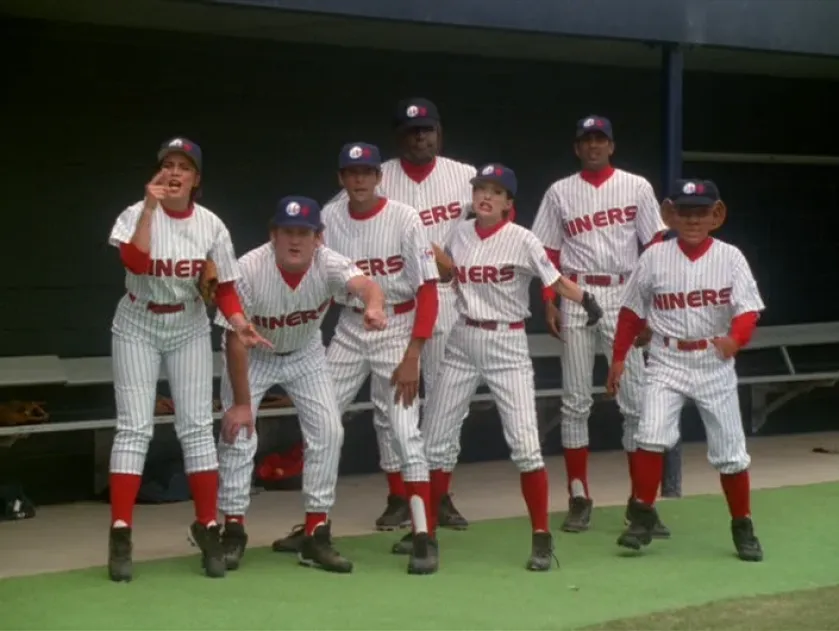
7×04 “Take Me Out to the Holosuite”
For all my talk about how Deep Space Nine is the darker, grittier installment of the Star Trek universe, its 7-season tenure also yielded some of the most unabashedly silly, lighthearted episodes across the franchise – particularly, “Take Me Out to the Holosuite”. By the time season 7 rolled around, even the most optimistic of characters were beaten down and war-weary: which made the sudden arrival of a goofy, baseball-centric standalone that much better.
The episode follows Sisko as he attempts to rope the staff of Deep Space Nine into a not-so-friendly baseball game against a team of Vulcans, hoping to settle the score with an old Starfleet rival. What ensues is 45 minutes of pure, aliens-play-baseball fun: from Odo as the umpire to Worf’s decidedly unsportsmanlike conduct, “Take Me Out to the Holosuite” is ridiculous, silly, fun. A welcome reprieve from the intensity of the season that surrounds it, “Take Me Out to the Holosuite” takes Sisko’s love for baseball and turns into the kind of unorthodox crowd-pleaser only Deep Space Nine could cook up.
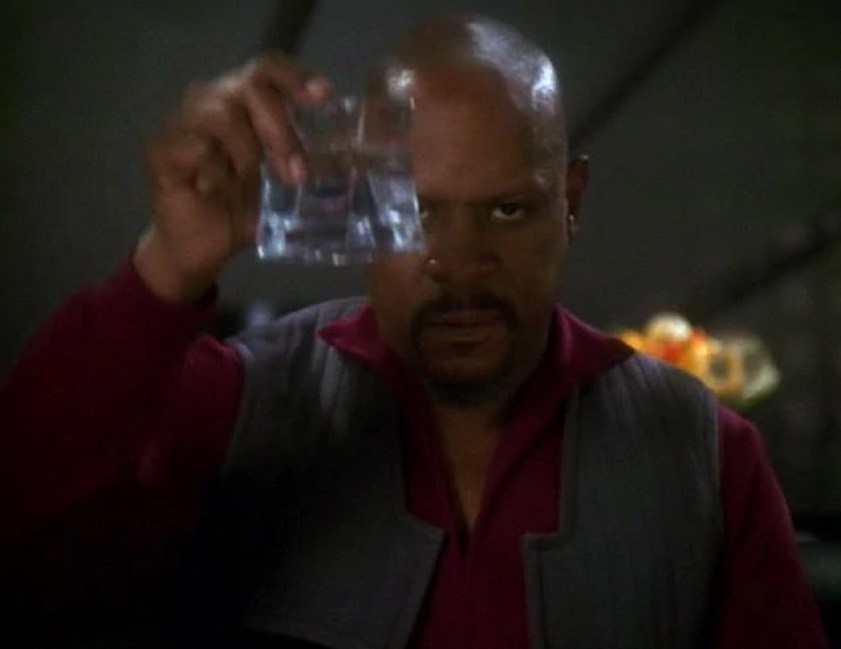
6×19 “In the Pale Moonlight”
Decidedly not as fun-filled is season six’s blistering character drama “In The Pale Moonlight”, which sees Captain Sisko grappling with whether or not to betray Starfleet’s ethical code when faced with the opportunity to ‘persuade’ the Romulans into joining the Federation’s alliance against the Dominion. Though at first Sisko enlists Garak to help with subterfuge and spy craft, the situation quickly spirals out of Sisko’s control, becoming an ethical dilemma as to whether or not he’s willing to defy the Federation’s principals in order to defend it.
Spearheaded by Avery Brook’s unwavering performance, “In The Pale Moonlight” could function as a gripping thriller film – a tightly written spy drama that perfectly utilizes Star Trek‘s winning formula of using science fiction to comment real-life issues. Add in the fact that the episode features three of the show’s most scene-stealing recurring characters: Andrew Robinson’s Garak, Jeffrey Combs’ Weyoun, and Casey Biggs’ Damar, and you’ve got the recipe for a hard-hitting, undeniably bleak, gutsy Star Trek episode.
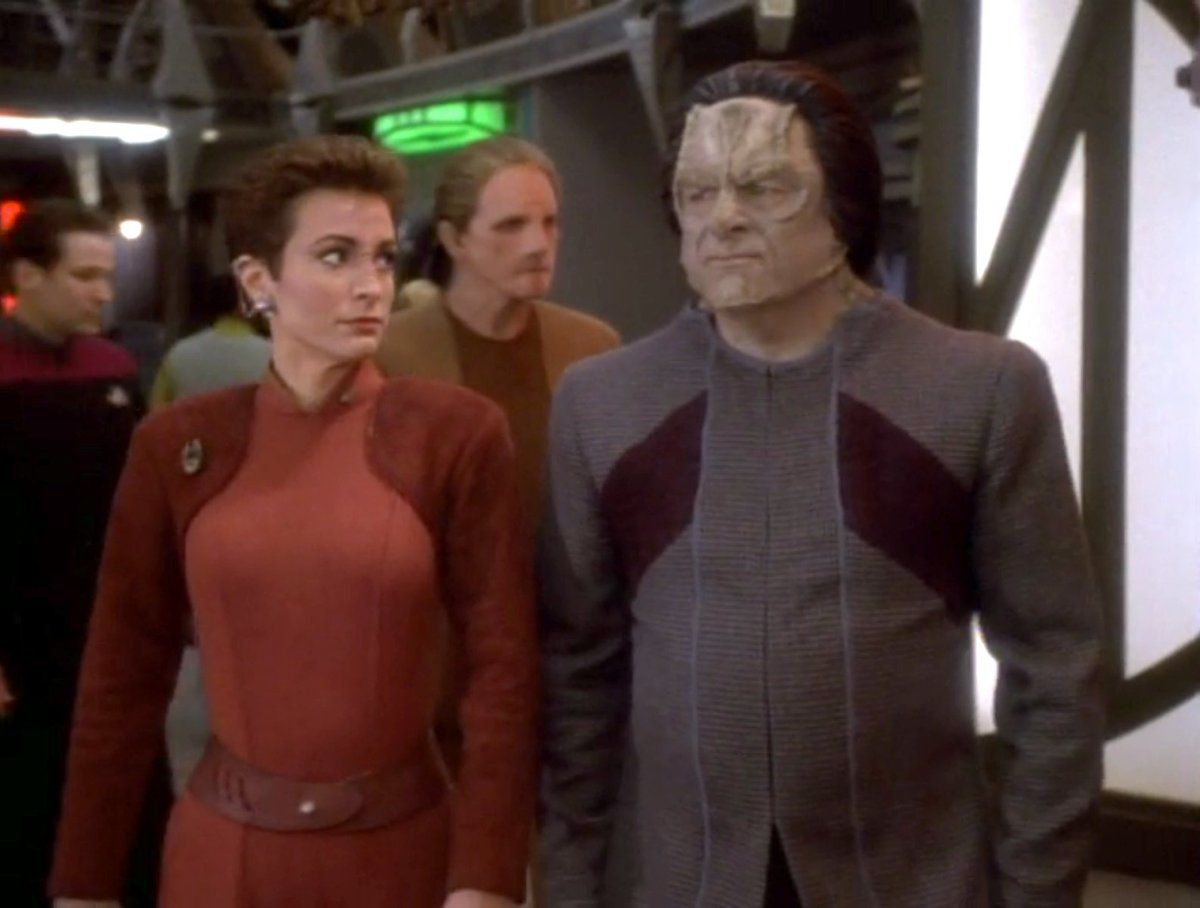
1×19 “Duet”
One of Deep Space Nine‘s most compelling and unique plotlines was the clash between the Bajorans and the Cardassians: when the Cardassians invaded and colonized Bajor it left the two species locked in a bitter, bloody war that left both sides full of resentment and vitriol. Though different facets of the Bajoran occupation are fleshed out and explored over the course of the series, one of the earliest and most effective looks at the tension between Bajorans and Cardassians was season one’s standout, “Duet”.
Also serving as one of the first major Kira-centric episodes, “Duet” follows the Major as she investigates a visiting Cardassian who she suspects is a notorious war criminal who was responsible for horrors during the Bajoran occupation. The more she digs, though, Kira discovers that the situation isn’t as cut-and-dry as it seems, and she’s forced to confront her own trauma and beliefs about the war with Cardassia. Coupled with a nihilistic twist ending that’s shockingly dark, even for Deep Space Nine, “Duet” remains one of the show’s best-written episodes, and an early opportunity to showcase the dramatic talents of Nana Visitor.
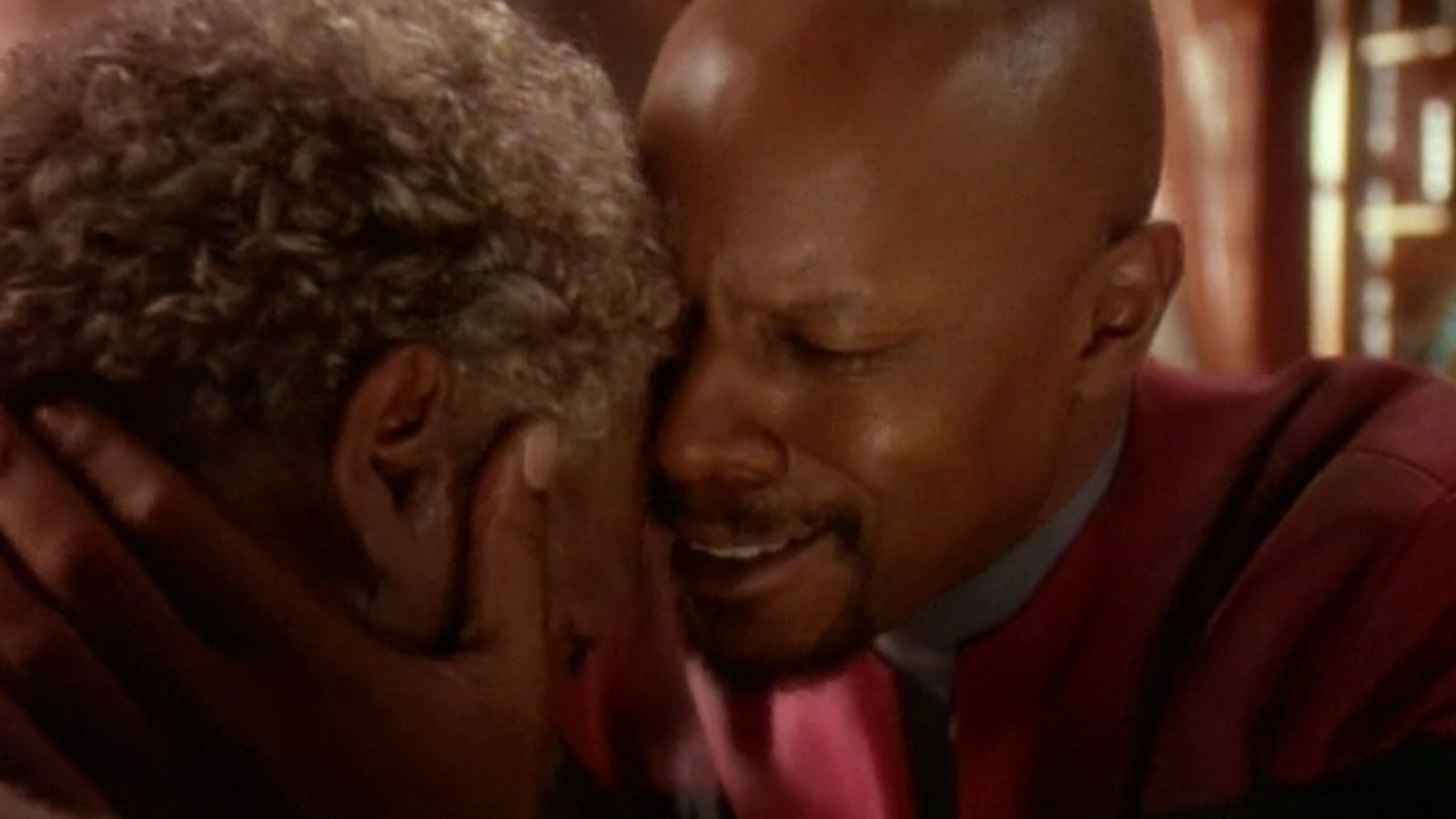
4×02 “The Visitor”
Another one of Deep Space Nine‘s greatest strengths and most unique qualities was the element of Sisko’s fatherhood: not only is he commander of the station, but he’s also responsible for the upbringing of his son, Jake. “The Visitor” puts the Jake/Sisko relationship front and center, with an ambitious, high-concept story that jumps 40 years in the future, in a timeline where Sisko was taken by a wormhole, and Jake spent the rest of his life obsessed with finding him again.
Considering how infrequently time travel is employed in Deep Space Nine, the show’s use of it here to explore a generational story about the men of the Sisko family makes an already strong premise all the more effective. Yet another opportunity for Avery Brooks to showcase his talent and range, “The Visitor” also features strong performances from Cirroc Lofton as Jake and Tony Todd (yes, THAT Tony Todd) as future Jake.
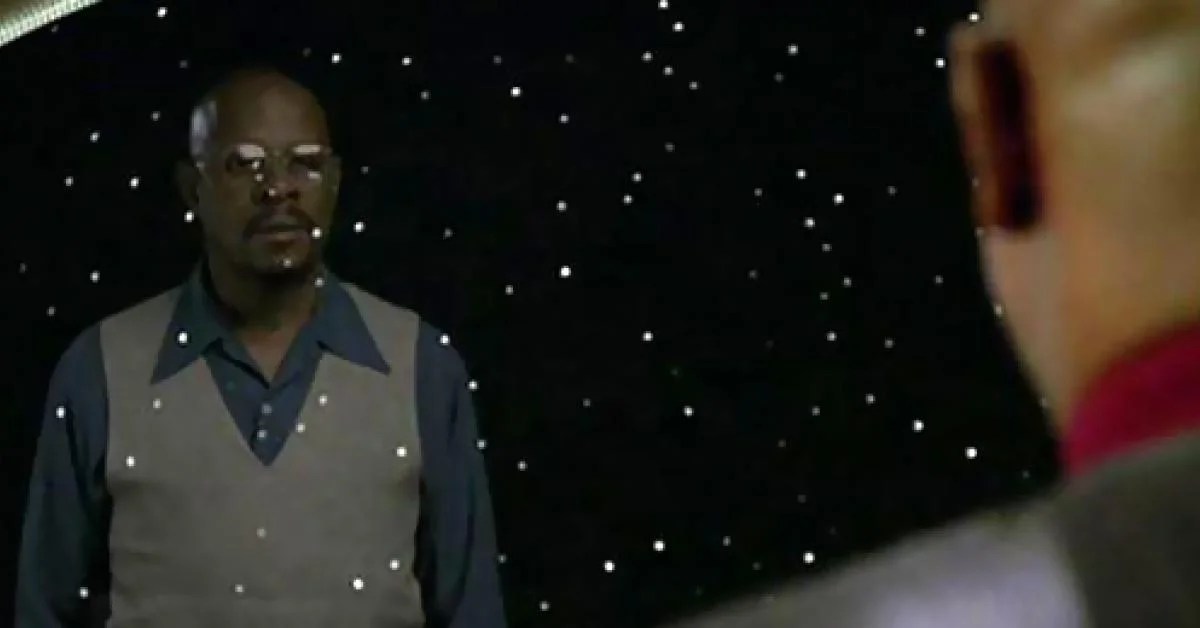
6×13 “Far Beyond the Stars”
Arguably the most ambitious, mold-breaking episode in the entire series, no other Star Trek episode is quite like season six’s “Far Beyond the Stars”, which features the entire cast reimagined as human writers in 1950s New York, after Captain Sisko is given a vision by the Prophets in which he assumes the life of sci-fi writer Benny Russell. The talented but reserved Benny dreams of a Black man in command of a space station, but when he attempts to pitch the story to his editor (Odo), he’s swiftly shot down and told that white readers aren’t interested in reading stories by or about Black men.
The episode continues to jump back and forth between Sisko, trying to make sense of his dream about Benny, and Benny, trying to write his story and navigate life as a Black man in the 50s. In addition to featuring a number of recurring guest stars (notably lacking the usual prosthetics, which makes for a fun who’s-who guessing game), “Far Beyond the Stars” gives the entire main cast the opportunity to play new characters that aren’t the same, but are perhaps… adjacent to their counterparts on DS9. More than that, though the episode is a poignant, poetic, utterly Trek approach to tackling racism.
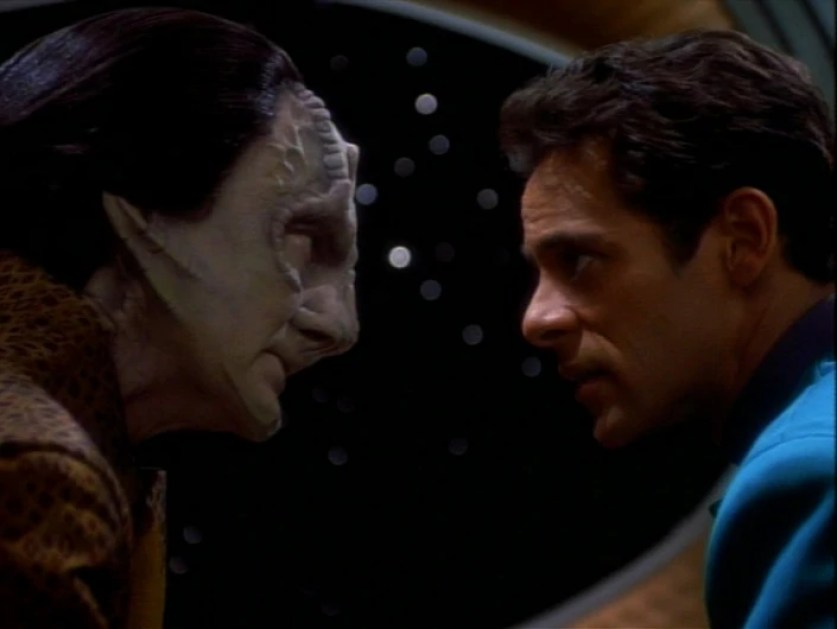
2×12 “The Wire”
Continuing to explore the mythos and culture of the Cardassians, season two’s “The Wire” put scene-stealing guest star Andrew Robinson to good use, crafting a compelling exploration of Garak’s many hidden layers via his deteriorating health and his tumultuous relationship with Doctor Bashir (Alexander Siddig). The episode follows Doctor Bashir as he discovers that Garak has a neurological implant, and goes on a mission to discover what it is and how to save Garak from it. Unbeknownst (at first) to Bashir, the implant is a pain-relieving device installed by his former superiors at the Obsidian Order (Cardassian black ops/CIA) to help him torture more efficiently.
As Garak begins to succumb to the implant’s deterioration, Bashir begs Garak to set his pride aside and let him in on what’s going on so that he can help – not understanding the depth and severity of his request. Anchored by yet another example of the writers’ penchant for character drama, “The Wire” is a thorough examination of Garak, addiction, and the Garak/Bashir relationship, which had been brimming since Garak’s introduction in season one.
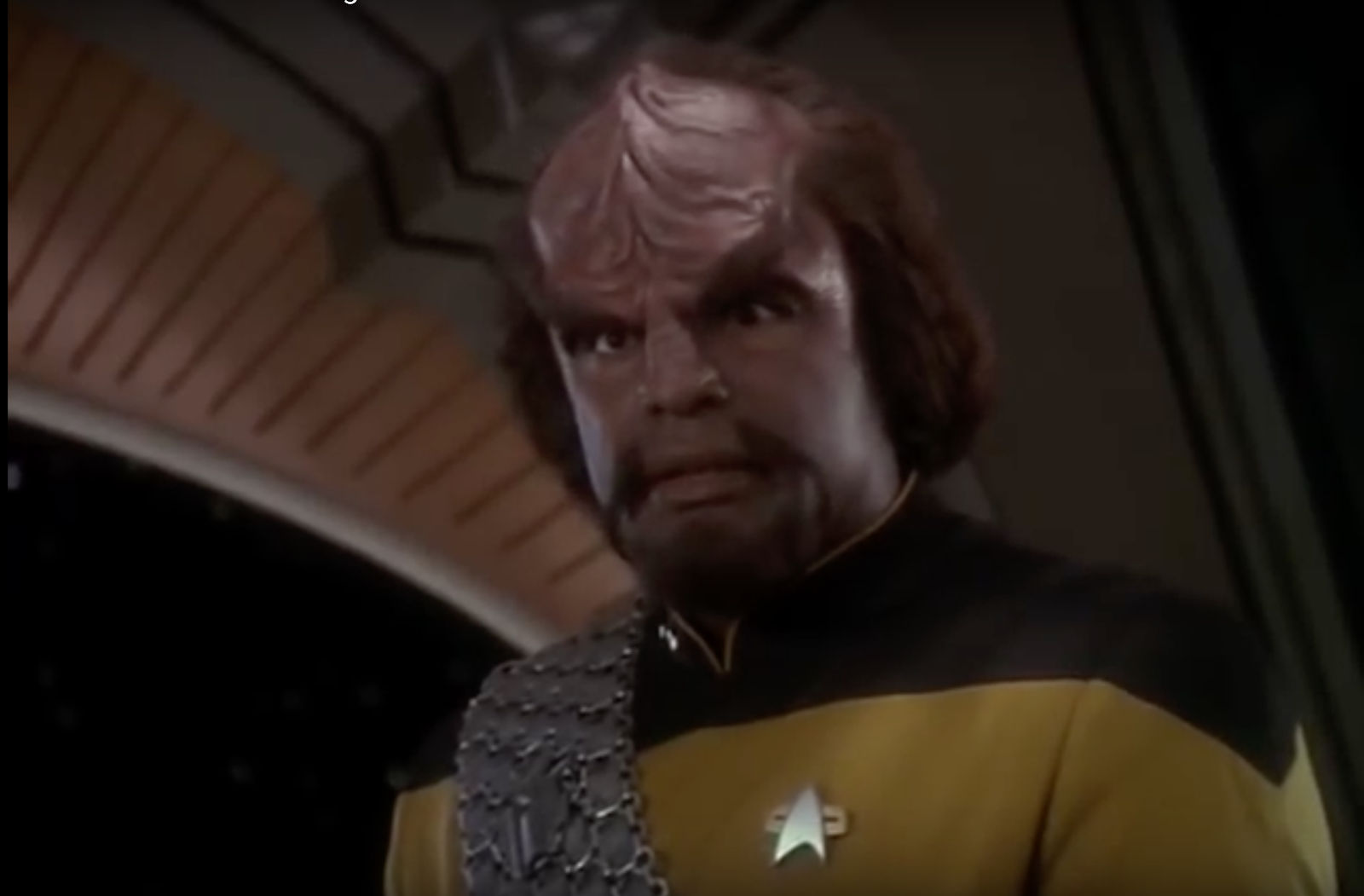
4×01 & 4×02 “The Way of the Warrior”
Though most casual Trek fans will likely recognize Michael Dorn’s Worf from his time as a series regular on Deep Space Nine‘s parent series The Next Generation, others may remember that Worf also enjoyed a stint as a regular on Deep Space Nine, joining the series for its final four seasons. Worf’s introduction to the world of DS9 (and reunion with former Enterprise crewmate Chief O’Brien) comes via the season four opener/two-parter “The Way of the Warrior”, which sees Worf visit Deep Space Nine at Sisko’s request to determine the motives of the Klingon Fleet, who have recently arrived at DS9 under the command of General Martok.
Any episode featuring Martok is a Deep Space Nine episode worth revisiting, but “Way of the Warrior” is a particularly strong entry for a number of reasons: not just the introduction of Worf and Martok, and the setup of the Dax/Worf romance, but also for its backdrop of the stealth Changeling Invasion. Unbeknownst to viewers at the time, the Martok we meet in “Way of the Warrior” is a changeling attempting to destabilize the Federation – a reveal which in turn would foreshadow the same fate for Doctor Bashir. Though the Klingons as a race are prominently featured throughout Trek, their inclusion on Deep Space Nine (primarily via Worf and Martok) adds yet another layer of depth to a rich culture.
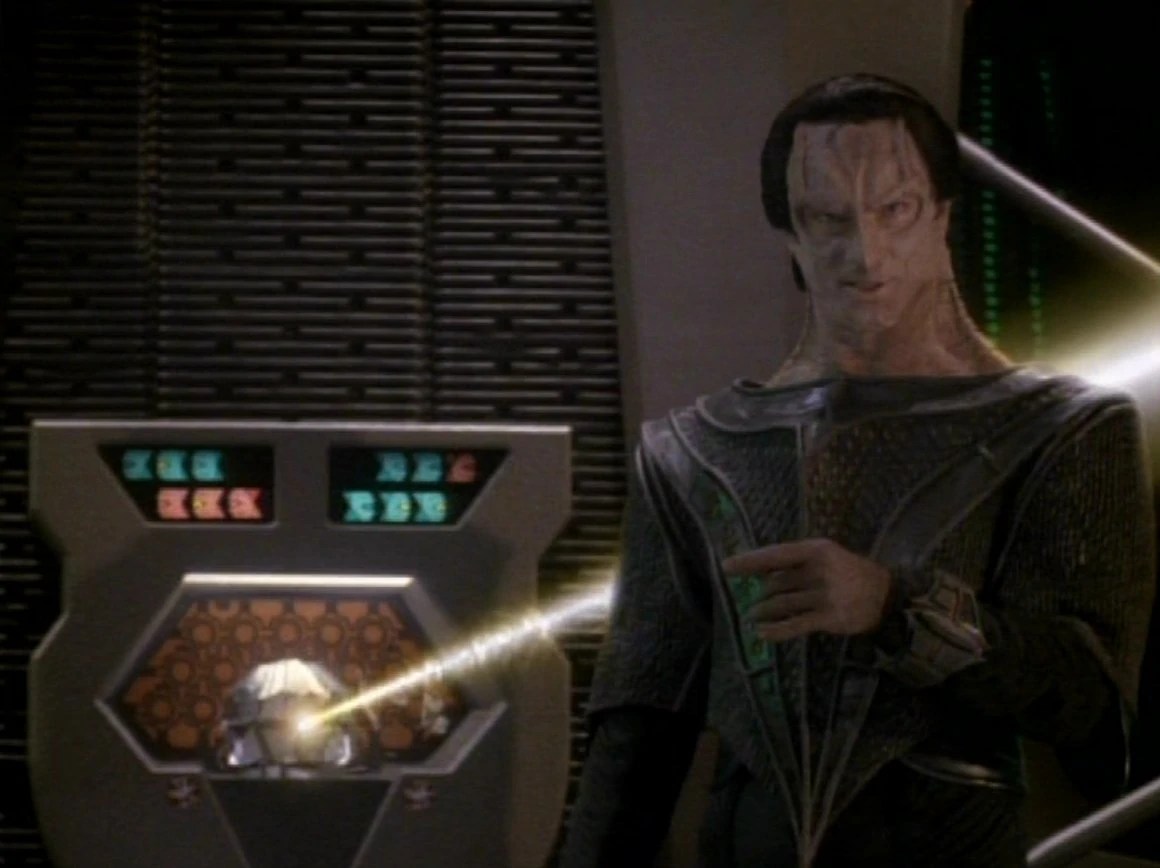
3×07 “Civil Defense”
It would be impossible to write a conclusive list of Deep Space Nine‘s greatest hits without including an episode that features Mark Alaimo’s slimy, psychotic, yet tragically sympathetic Gul Dukat, and few other Dukat episodes are quite as iconic (and quoted) as season three’s “Civil Defense”. When Jake and O’Brien accidentally trip the wrong sensor, they activate a latent security protocol that puts the station on lockdown and starts a ticking self-destruct timer: resulting in the classic race-against-time to find a way out.
Though at first the crew attempt to use Garak’s Cardassian DNA to circumvent the protocols, they end up having to turn to the obsessive Gut Dukat for assistance, before he himself is also inadvertently trapped on the station: a reversal of fortune as poetic as it is gratifying. Between the pulse-pounding story structure, the quotable dialogue (“Attention Bajoran Workers!”) and the ever-compelling presence of Dukat, “Civil Defense” is an early example of Deep Space Nine‘s growing interest in exploring the Cardassian side of the Bajoran occupation.
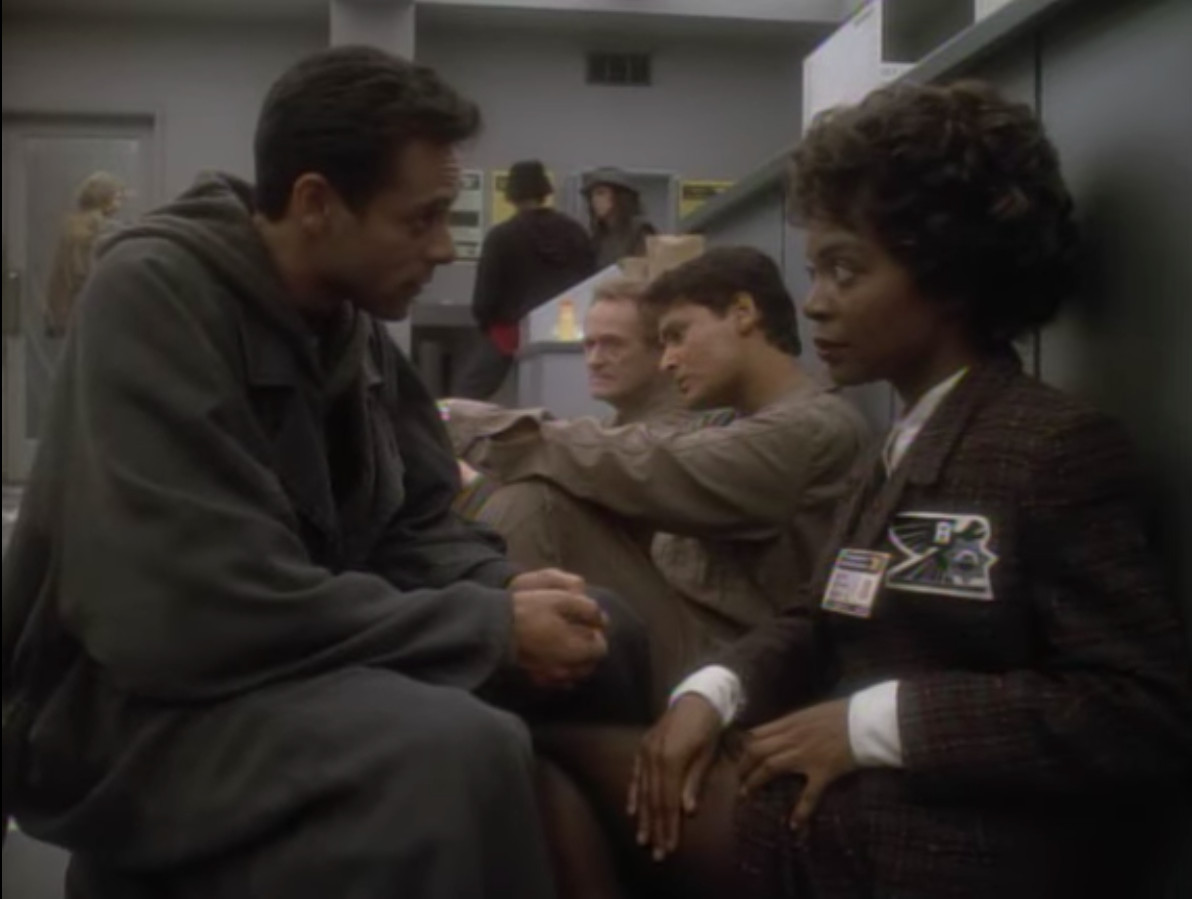
3×11 & 3×12 “Past Tense”
It’s no secret that Star Trek enjoys making predictions about the not-to-distant future (regardless of how far off the fashion course they tend to be) but Deep Space Nine‘s season three two-parter “Past Tense” took a more grounded look at the near future. The episode follows Sisko, Dax, and Bashir as they’re accidentally stuck three hundred years in the past: 2024. The crew are separated: Sisko and Bashir end up wandering a homeless encampment and coming up-close and personal with the city’s housing, drug, and food crises, while Dax is saved by a wealthy upper-crust man and shown the decadence of the high life.
The parallel stories for Dax and Sisko/Bashir provide insightful and familiar commentary about class divides and income inequality in America, with specific attention paid to the epidemic of homelessness and the failings of the healthcare system. It’s rare that Star Trek is so flat-out with its commentary, but Deep Space Nine is remembered as the darker, bolder show for a reason: frighteningly prescient episodes like “Past Tense” prove the timeless brilliance of DS9 as a series.
(images via CBS and Paramount)



